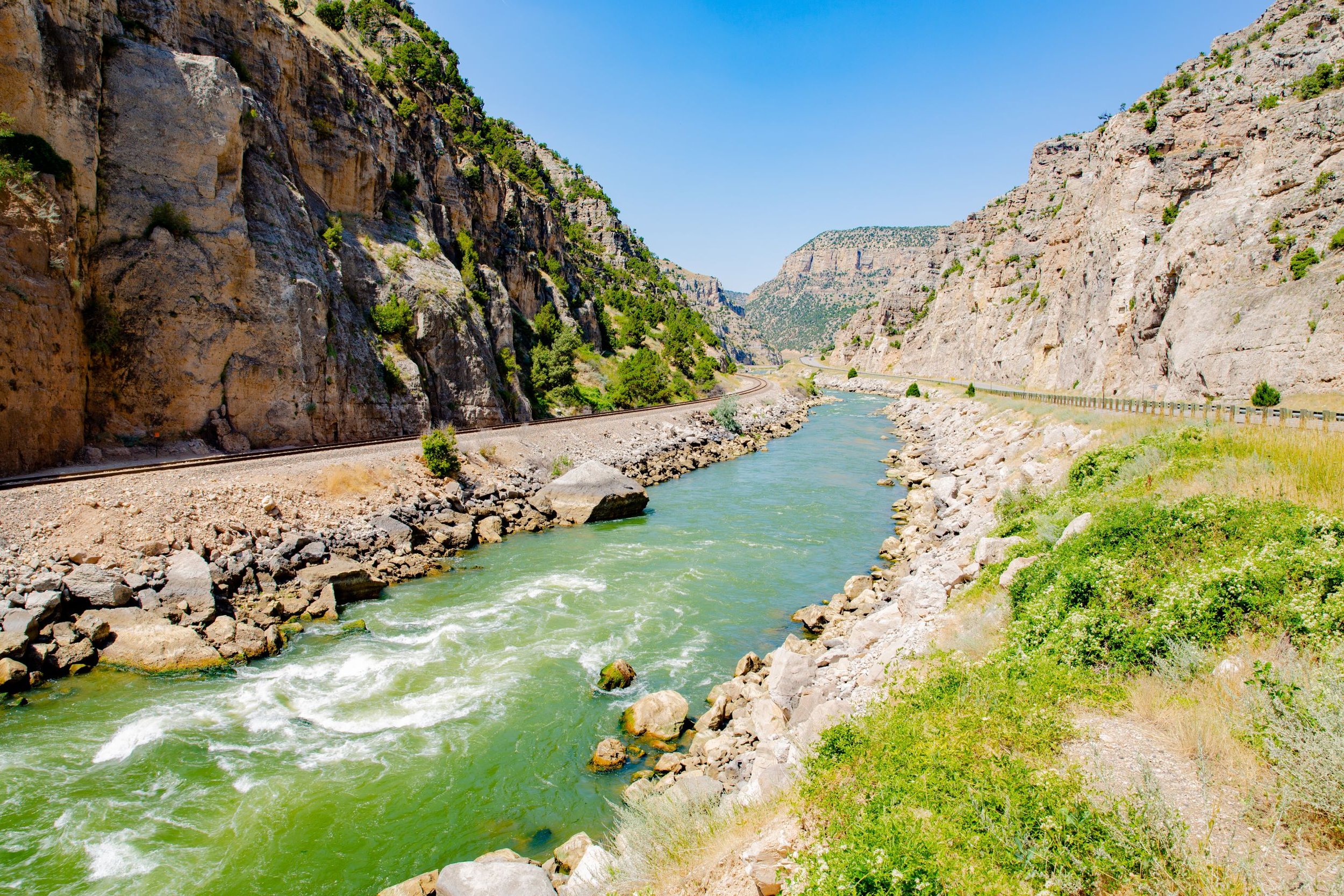Tribal Stories events build community in Greater Yellowstone
At least 49 Tribes retain deep connections to Greater Yellowstone, including the Eastern Shoshone and Northern Arapaho of the Wind River Indian Reservation, a key landscape within our region.
GYC’s Tribal Program, led by GYC Senior Wind River Conservation Associate Wes Martel (Eastern Shoshone) and Wind River Conservation Organizer Colleen Friday (Northern Arapaho), is working to help restore Indigenous conservation priorities that honor Tribal cultural landscapes, Treaty rights, and Tribal ways of life both on the reservation and beyond.
The Big Wind River in Wyoming is a crucial source of water to many residents of the Wind River Indian Reservation.
As part of this work, we are gathering people together this fall to dive into impactful stories, photos, and film that showcase the social, economic, and cultural injustices against Indigenous People. We will also discuss how GYC is leading the way to help tackle these complex problems by making space for conversations and community building with the Wind River Tribes and other sovereign Tribal Nations in Greater Yellowstone and beyond.
Part of this work stems from a goal of ensuring the region’s waters are clean, cold, free-flowing, and able to sustain the remarkable diversity of the ecosystem. GYC wants to make sure water supports the cultural, spiritual, and economic well-being of the people who live here.
When GYC opened its Fort Washakie office on the Wind River Indian Reservation, we knew there was a complicated history of water issues related to the Big Wind River. The film Tribal Waters showcased as part of these events, tells the story of the river from our friend and Northern Arapaho Tribal Member Darren Calhoun.
Over the past 100 years, numerous federal acts, policies, and projects have been designed to oppress Indigenous People and limit access to land and water: the Dawes Allotment Act of 1887, Reclamation Act of 1902, Indian Reorganization Act of 1934, the Rogers C. B. Morton Moratorium of 1973, and many more. On the Wind River Indian Reservation, the construction of Diversion Dam in 1919 and the Big-Horn Adjudication Case of 1977—which ruled in favor of the State of Wyoming over the Wind River Indian Reservation—made accessing water difficult, ignored Treaty Rights, denied all 15 uses of the Tribal Water Code, and provided more cultural hardships for the Eastern Shoshone and Northern Arapaho.
Even with these continual setbacks, there have been two important wins for Tribal Nations. First was the 1908 court case Winters v. United States, from which came the Winters Doctrine – establishing and enforcing that Tribes have senior treaty rights to water. A second major win came on April 6, 2022, when Interior Secretary Deb Haaland lifted the Rogers C.B. Morton Moratorium, which previously prohibited Tribes from adopting water codes.
We are seeking to further restore Tribal water rights by asking the federal government to review the social, economic, and cultural injustices of Wyoming’s Diversion Dam on the main stem of the Big Wind River and the related Wyoming Canal project. The current system has diverted water away from the Eastern Shoshone and Northern Arapaho people and re-routed it to non-Indian people downstream for more than 100 years. We also aim to help restore the upper Big Wind River—along with its ecologically important riparian habitat—and all the cultural, spiritual, and economic benefits a healthy river can bring to the tribes of the Wind River Indian Reservation and its neighbors.
We are hopeful that not long from now, the Wind River Tribes can finally use their adopted water code and make a positive difference for people and fisheries along this important river in Wyoming. Thanks to your support, a day is coming when we will see a healthy, clean, cold, and free-flowing upper Big Wind River once again.
—Charles Drimal, deputy director of conservation


